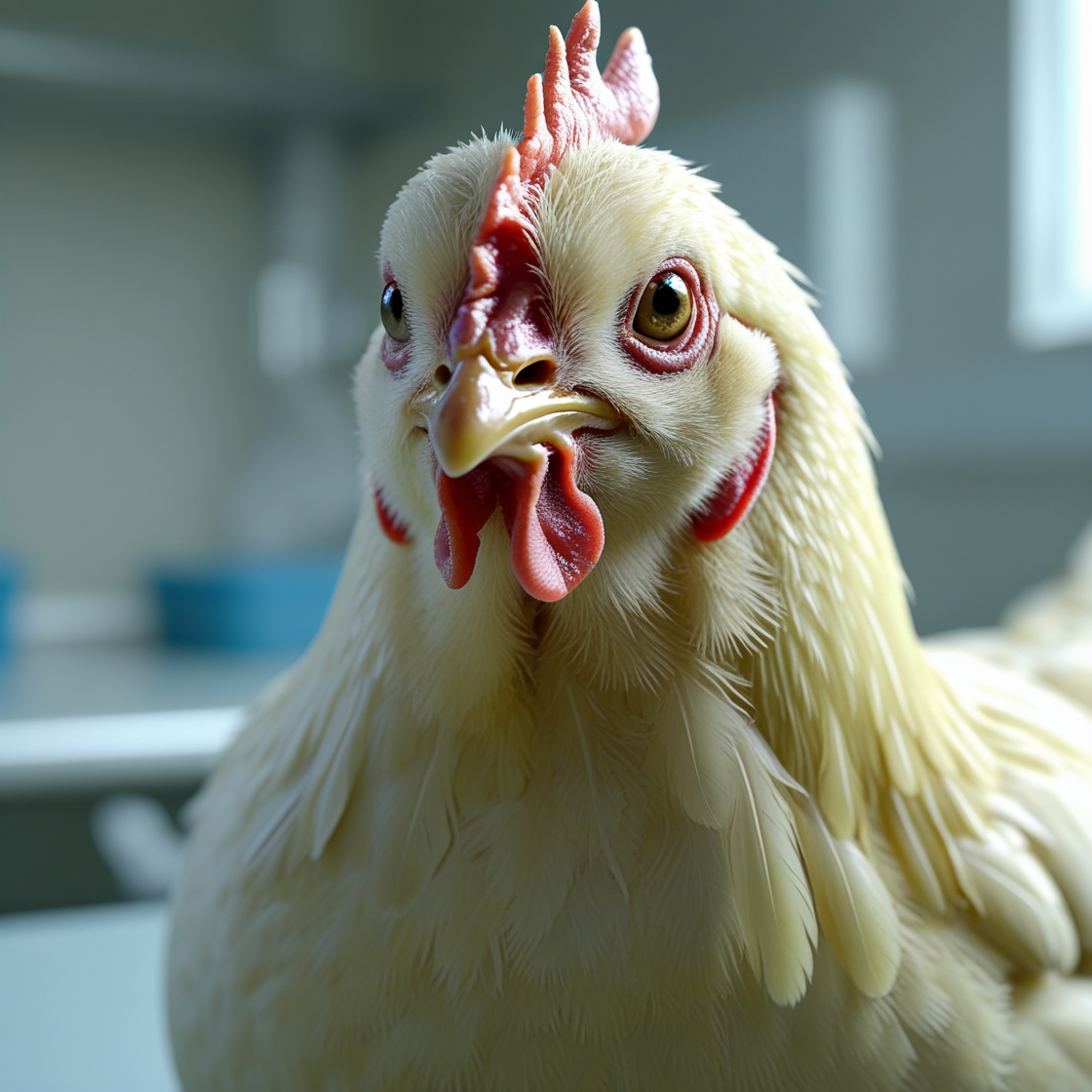Online Chicken Wellness Care & Health Check from Home
Online chicken wellness care consultation - only $65. Get expert virtual vet care for your flock's health and preventive care without leaving home.
TALK TO A VET

Essential components of chicken wellness: Diet Optimization: • Age-appropriate feed selection • Proper protein levels • Calcium requirements • Vitamin supplementation • Fresh water access • Treat moderation Housing Requirements: • Adequate space per bird • Proper ventilation • Weather protection • Predator security • Clean environment • Appropriate lighting Biosecurity Measures: • Visitor protocols • Quarantine procedures • Cleaning schedules • Disease prevention • Pest control • Equipment sanitation
Key areas to check regularly: Physical Assessment: • Weight and body condition • Feather quality and coverage • Skin condition • Foot health • Beak condition • Comb and wattles • Eye clarity • Respiratory function Behavioral Monitoring: • Activity levels • Eating patterns • Social interactions • Dust bathing • Roosting habits • Egg laying patterns Environmental Checks: • Coop cleanliness • Bedding condition • Air quality • Temperature control • Humidity levels • Pest presence
Our veterinary team provides comprehensive wellness support: 1. Wellness Assessments • Complete health evaluations • Nutritional analysis • Housing inspections • Biosecurity reviews • Flock management assessment 2. Preventive Care Plans We develop customized plans for: • Vaccination schedules • Parasite control • Diet optimization • Environmental improvements • Health monitoring 3. Ongoing Support • Regular check-ups • Diet adjustments • Housing modifications • Seasonal care tips • Emergency planning 4. Educational Resources • Care guidelines • Health monitoring tools • Nutrition information • Best practices updates
Essential seasonal adjustments: Summer Care: • Heat stress prevention • Extra water sources • Ventilation optimization • Shade provision • Cool treats management Winter Preparations: • Draft prevention • Proper insulation • Heated water sources • Feed adjustments • Light management Spring/Fall Transitions: • Molting support • Parasite prevention • Housing maintenance • Diet adjustments • Health screenings
Regular wellness checks are recommended: Routine Check Schedule: • Quarterly health assessments • Bi-annual parasite screening • Annual vaccination review • Seasonal preparation visits • New flock member evaluations Additional Checks When: • Adding new birds • Before breeding season • After illness recovery • Environmental changes • Performance changes • Behavior changes Contact Telavets to establish a personalized wellness schedule for your flock.
As a practicing poultry nutritionist and veterinarian with 18 years of experience, I've seen dramatic health improvements when owners implement proper feeding protocols. Nutrition forms the foundation of immune function, egg production, and overall vitality. Evidence-Based Nutritional Guidelines: Protein Requirements by Life Stage: • Starter chicks (0-8 weeks): 20-24% protein for proper development • Growing pullets (8-18 weeks): 16-18% protein to support growth without excess • Laying hens: 16-18% protein with 4% calcium for strong eggshells • Breeding roosters: 14-16% protein with added vitamins A, D, E Essential Micronutrients: • Vitamin A: 8,000-10,000 IU/kg - critical for respiratory and reproductive health • Vitamin D3: 2,500-3,000 IU/kg - essential for calcium absorption • Selenium: 0.3 mg/kg - powerful antioxidant preventing muscle disorders • Omega-3 fatty acids: 300-500mg daily - supports immune function and egg quality Water Quality Standards: • pH between 6.0-8.0 - outside this range reduces feed consumption • Less than 1,000 ppm total dissolved solids - excess minerals cause diarrhea • Nitrate levels below 25 ppm - higher concentrations toxic to poultry • Fresh, clean water changed every 2-3 days minimum Feeding Protocol Optimization: Free-choice feeding works best for most backyard flocks, but measure daily consumption. Adult hens consume 100-120 grams of feed daily. Sudden appetite changes often indicate underlying health issues. In my practice, properly nourished flocks show 40% fewer disease incidents and maintain consistent egg production year-round.
Throughout my veterinary career specializing in poultry husbandry, environmental management has proven to be the single most important factor in flock health outcomes. Poor environmental conditions are the primary predisposing factor in 70% of disease outbreaks I investigate. Critical Environmental Parameters: Temperature Management: • Adult chickens: Comfort zone 55-75°F (13-24°C) • Below 45°F: Increased energy requirements, reduced egg production • Above 85°F: Heat stress, reduced feed intake, poor egg quality • Install thermometers at bird level - temperatures vary significantly within coops Ventilation Requirements: • Minimum 4 cubic feet per minute per bird during winter • Summer ventilation should be 10x higher to remove heat and moisture • Ammonia levels must stay below 25 ppm - test monthly with indicator strips • Proper air movement prevents respiratory disease and improves feed conversion Space Allocation Standards: • Indoor space: 4 square feet per bird minimum for large breeds • Outdoor run: 10 square feet per bird to prevent behavioral issues • Perch space: 8-10 inches per bird to prevent crowding stress • Nesting boxes: 1 box per 4-5 hens, positioned in quiet, dim areas Lighting Management: • Laying hens need 14-16 hours of light daily for optimal production • Gradual light transitions prevent stress - 15-minute sunrise/sunset simulation • Light intensity: 10-20 lux at bird level sufficient for most activities • Red light reduces aggression and feather picking behaviors Biosecurity Protocols: • Footbaths with 2% bleach solution at coop entrances • Visitor logs and health declarations prevent disease introduction • All-in, all-out management when possible to break disease cycles • Equipment disinfection between different bird groups Environmental monitoring prevents 80% of common poultry health problems. I recommend weekly environmental assessments using standardized checklists to maintain optimal conditions consistently.